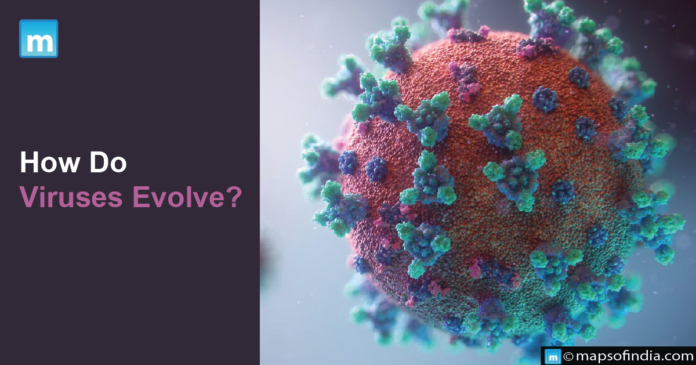Viruses are contagious agents that can only reproduce inside their host organisms. Bacteria, plants, animals, and even viruses can all be infected by other living things. A microscope is required to see viruses because of their small size and straightforward structure. When a virus particle is separate from its host, it is made up of a viral genome—the virus’s genetic material— housed in a protein capsule known as a capsid. In certain viruses, a membrane known as the envelope encloses the protein shell. Given that they can be either DNA or RNA, single- or double-stranded, linear or circular, and their length and number of DNA or RNA molecules can vary, viral genomes can take many different forms. Viruses dominate our planet, and the evolution of these organisms is a vast and practical field that can be studied in real-time.
Evolution
Since they are much smaller than the tiniest colloidal fragments forming sedimentary rocks that fossilize plants and animals, viruses do not create fossils in the conventional sense. However, endogenous viral elements (EVEs) are found in the genomes of many organisms. These DNA strands are the surviving parts of ancient virus genomes and genes that once “invaded” the host germline. Hundreds to thousands of sequences derived from ancient retroviruses, for instance, can be found in the genomes of most vertebrate species. In addition to giving rise to paleobiology, these sequences are a valuable source of retroactive data regarding the evolutionary history of viruses.
When two viruses of similar strains infect the same cell, many viruses (such as the influenza A virus) can “shuffle” their genes with the genes of the other viruses. New and more virulent strains frequently emerge due to this phenomenon, known as genetic shift. Other viruses evolve more slowly as antigenic drift or the accumulation of mutations in their genes over time occurs.
Transmission
Evolution has allowed viruses to maintain their infectious existence. The ability to spread has been given to viruses by their quick mutation rates and natural selection. The evolution of virus transmission is one way that viruses have been able to spread. The virus can pick up a new host using the:
- Transmission by droplet—transmitted through bodily fluids.
- It was spread through the air or airborne transmission.
- Waterborne transmission involves an agent moving from a host, contaminating the water, and ingesting a new host.
- Vector transmission: information is taken in by a carrier and delivered to a new host.
Virulence, or the harm a virus causes to its host, is influenced by several variables. The degree of virulence is particularly susceptible to variations in the mode of transmission. Viruses that spread via vertical transmission will develop less virulent forms over time. Viruses that spread horizontally typically evolve into more virulent strains over time.
Understanding the emergence of new viral pathogens is one of the remaining questions surrounding virus evolution. Predictions of such virulent adaptations are challenging due to their unpredictable and stochastic nature.




